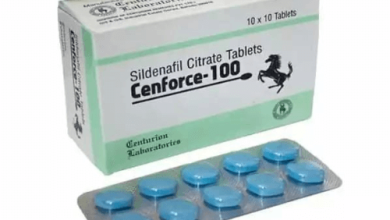How to Maximize Point of Service Collections in Medical Billing

Point of Service Collections in Medical Billing
Point of Service (POS) collections in medical billing refers to the process of collecting payments from patients for healthcare services at the time of service or soon after. This method of collection differs from traditional medical billing practices where payments are collected after the services have been provided and the insurance claims have been processed by revenue cycle management companies.
Also Read: Role of Service Codes in Medical Billing
The benefits of POS collections in medical billing
Increased Cash Flow: By collecting payments at the time of service or soon after, healthcare providers can increase their cash flow and reduce their outstanding accounts receivable. This can help medical billing companies to avoid financial difficulties and improve their overall financial stability.
1. Reduced Bad Debt:
When patients are responsible for paying a portion of their medical bills at the time of service, they are more likely to take their financial obligation seriously and make prompt payments. This can reduce the risk of bad debt and improve overall collections.
2. Improved Patient Satisfaction:
When patients are able to make payments at the time of service or soon after, they are more likely to feel satisfied with the billing process. This can help to build trust and foster a positive relationship between patients and healthcare providers.
3. Reduced Administrative Costs:
By collecting payments at the time of service, providers can reduce their administrative costs associated with traditional medical billing practices. This includes costs associated with insurance claims processing, follow-up on denied claims, and collections.
4. Increased Accuracy:
By collecting payments at the time of service, providers can reduce the risk of billing errors and ensure that patients are charged correctly for their services. This can help to improve the overall accuracy of the billing process and reduce the risk of denied claims.
Also Read: How Providers Are Responsible for Risk Adjustment Records
Strategies for maximizing POS collections in medical billing
Now we will explore the key strategies for maximizing POS collections in medical billing in detail.
1. Offer Multiple Payment Options:
Patients are more likely to pay their medical bills when they have options for payment. Providers should offer a variety of payment options to accommodate patients’ payment preferences, including cash, credit cards, e-checks, and online bill pay. This can simplify the payment process and increase the likelihood of prompt payment.
2. Train Staff on Proper Billing Procedures:
Staff training is a crucial component of maximizing POS collections. Regular training sessions can help staff stay up-to-date with the latest billing processes, regulations, and avoid common mistakes. Providers should ensure that their staff is fully trained in proper billing procedures, including insurance verification, coding, and claim submissions.
3. Implement an Electronic Payment System:
Electronic payment systems can significantly simplify the billing process, reduce errors, and speed up payment collection times. Providers should consider implementing an electronic payment system that is user-friendly, secure, and can integrate with their existing billing software. This can provide patients with a convenient and efficient way to pay their bills, as well as streamline the payment process for providers.
4. Establish Clear Payment Policies:
Providers should establish clear payment policies and communicate them to patients. This can include payment due dates, payment methods, and the consequences of non-payment. Providers should also offer flexible payment options, such as installment plans, to help patients pay their bills. This can encourage patients to make timely payments and reduce the likelihood of bad debt.
5. Utilize Insurance Eligibility Verifications:
To minimize denied claims and improve collections, providers should utilize insurance eligibility verification tools. These tools can help to verify patient insurance coverage before a service is rendered, and provide an estimate of the patient’s out-of-pocket responsibility. This can help patients to understand their financial obligation, and providers to avoid denied claims and improve collections.
6. Offer Prompt Billing Services:
Providers should aim to bill patients promptly after a service is provided. This can reduce the likelihood of patients forgetting about the bill or becoming overwhelmed by multiple bills. Providers should also follow up promptly on any outstanding or denied claims. This can help to ensure that payments are received in a timely manner and reduce the risk of bad debt.
7. Provide Excellent Customer Service:
Patients are more likely to pay their bills if they feel that their concerns and questions are being addressed in a timely and respectful manner. Providers should strive to provide excellent customer service, respond to patients’ questions, and resolve any billing-related issues promptly. This can foster trust and loyalty, and encourage patients to make timely payments.




